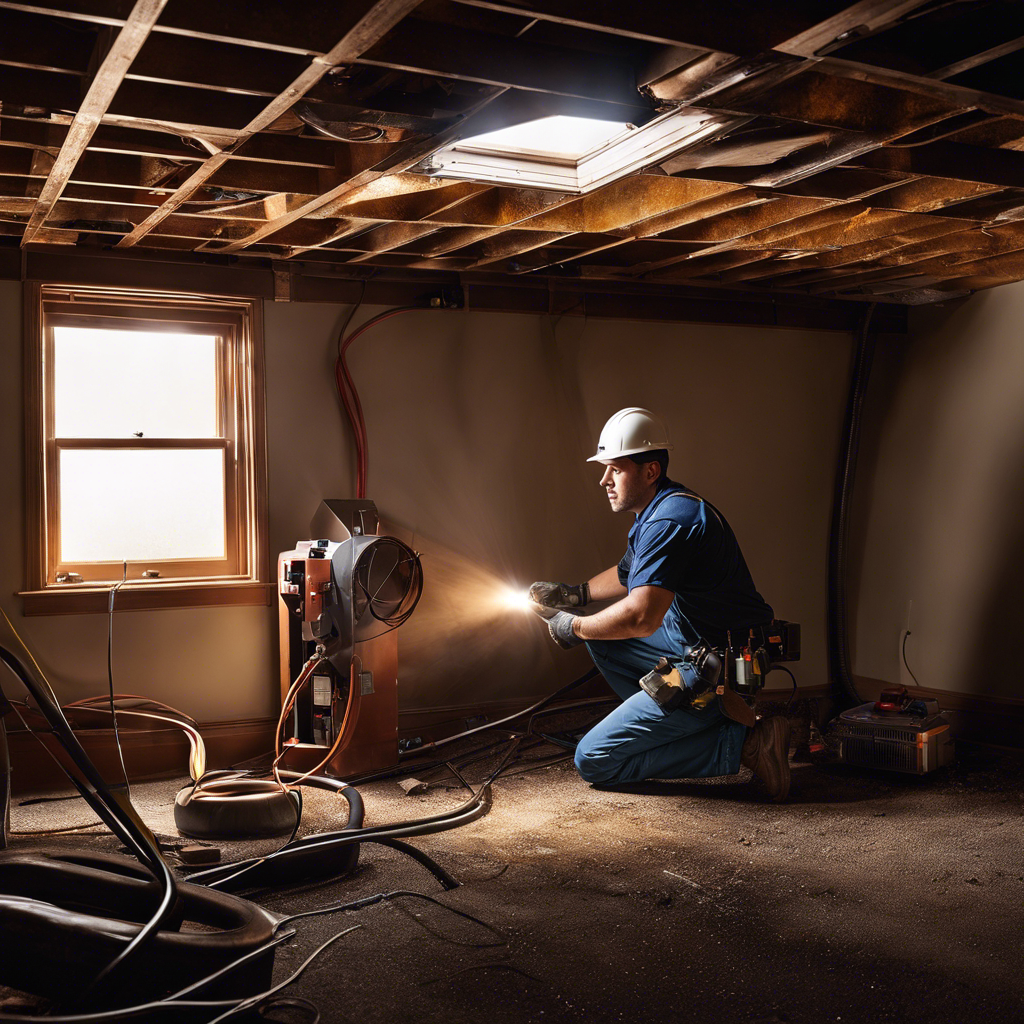Welcome to ‘Upgrading Your Ductwork: A Guide to Replacing HVAC Ducts,’ a comprehensive resource designed to help you enhance the efficiency and comfort of your HVAC system. Whether you’re a homeowner or a business owner, this guide is tailored to meet your needs.
In this guide, we will explore the importance of load calculation, signs indicating the need for ductwork replacement, common problems associated with ductwork, and the benefits of upgrading your ducts. We will also provide tips for improving indoor air quality and discuss factors that can affect the cost of air duct replacement.
Whether you’re considering a DIY approach or hiring a professional, this guide has got you covered. With our detailed explanations and helpful resources, you’ll be equipped to make informed decisions about upgrading your ductwork.
So, let’s dive in and discover how you can optimize your HVAC system for maximum efficiency and comfort.
Key Takeaways
- Upgrading HVAC ducts can lead to improved energy efficiency, potential cost savings on energy bills, and increased comfort levels in the home.
- Signs that your ductwork needs replacing include visible gaps and large air leaks, inconsistent temperatures throughout the home, mold growth in the ducts, excessive dust or allergens in the air, and high energy bills despite an efficient HVAC system.
- The steps involved in replacing HVAC ducts include a thorough assessment of current ductwork by a professional HVAC contractor, consultation with HVAC professionals to determine the right type and size of ducts, creating a duct map and planning for the installation of new ducts, adding insulation to enhance efficiency, and preparing the space for the new ducts.
- Properly sealed and insulated ductwork is important as it prevents air leakage, improves comfort by maintaining consistent temperatures, reduces energy waste and lowers utility costs, minimizes the risk of mold growth, and enhances the overall performance of the HVAC system.
Benefits of Upgrading HVAC Ducts
Upgrading HVAC ducts offers numerous advantages, including improved energy efficiency, enhanced indoor air quality, and reduced noise levels in the home.
One of the main benefits of upgrading your ductwork is the potential to save money on energy costs. By replacing old, leaky ducts with properly sealed ones, you can prevent air leakage and ensure that conditioned air reaches its intended destination. This not only improves energy efficiency but also leads to increased comfort levels in your home.
Additionally, upgrading your ductwork can significantly improve indoor air quality. Old ducts can accumulate dust, allergens, and other pollutants over time, which can negatively impact the air you breathe. By investing in duct replacement and incorporating air purification measures, you can create a healthier living environment for you and your family.
It is important to hire a professional to ensure that the replacement is done correctly and to maximize the benefits of upgrading your HVAC ducts.
Signs That Your Ductwork Needs Replacing
One clear indication that your ductwork needs replacing is the presence of visible gaps and large air leaks. Leaky ducts not only result in inefficient heating and cooling, but they can also lead to other issues that need attention. For instance, these gaps can allow mold growth, which can contaminate the air with airborne contaminants and cause health issues for occupants.
Another sign that your ductwork may need replacing is if you notice inconsistent temperatures throughout your home, even though your HVAC system is functioning properly. This could be a result of air escaping through damaged ducts.
It’s essential to have a professional HVAC contractor assess the condition of your duct system, taking into account the square footage of your home, before deciding on replacement.
Steps Involved in Replacing HVAC Ducts
To begin the process of replacing HVAC ducts, it is important to start with a thorough assessment of the current ductwork by a professional HVAC contractor. This assessment involves evaluating the age, condition, and efficiency of the existing ducts.
Once the assessment is complete and it is determined that replacement is necessary, the next step is to consult with HVAC professionals to determine the right type and size of ducts for the home. This involves considering factors such as the size of the house, the heating and cooling needs, and the desired energy efficiency.
After the consultation, the process continues with creating a duct map to assess the existing ductwork and planning for the installation of new ducts. This includes adding insulation to enhance efficiency and preparing the space for the new ducts.
Importance of Properly Sealed and Insulated Ductwork
Properly sealing and insulating ductwork is essential for optimizing comfort, energy efficiency, and indoor air quality in HVAC systems.
Upgrading ductwork by replacing old, leaky or uninsulated ducts can significantly improve the overall performance of the system.
When ducts are properly sealed, it helps to prevent air leakage, ensuring that conditioned air reaches its intended destination without escaping into unconditioned spaces. This not only improves comfort by maintaining consistent temperatures throughout the building but also reduces energy waste and lowers utility costs.
Additionally, insulation plays a crucial role in preventing heat transfer and condensation within the ducts, thus minimizing the risk of mold growth and improving the indoor air quality.
Improving Indoor Air Quality With Upgraded Ductwork
Upgraded ductwork enhances indoor air quality by reducing airborne contaminants. When replacing old or poorly functioning HVAC ducts, it is important to consider the impact on indoor air quality.
Upgraded ductwork can help to eliminate leaks and gaps that allow dust, pollen, and other allergens to enter the system. By ensuring a tight seal and proper insulation, upgraded ductwork can prevent the circulation of pollutants throughout the home.
Additionally, improved ductwork can enhance the overall system performance, leading to better filtration and ventilation. This results in cleaner and fresher air, promoting a healthier indoor environment.
To achieve the best results, it is recommended to consult a professional guide for replacing HVAC ducts and choose suitable materials and insulation techniques to optimize indoor air quality when upgrading ductwork.
Frequently Asked Questions
Should You Replace Ductwork When Replacing Hvac?
When replacing an HVAC system, it is often advisable to consider replacing the ductwork as well. This can enhance energy savings, improve indoor air quality, reduce noise, and address potential issues with air leakage and improper sizing.
Should 30 Year Old Ductwork Be Replaced?
When considering the lifespan of ductwork, it is important to assess its condition and signs of deterioration. Depending on the severity, repairing or replacing old ductwork can improve energy efficiency, indoor air quality, and reduce health risks. Cost considerations and the importance of proper sizing should also be taken into account.
What Is a Common Mistake in Ductwork Installation?
A common mistake in ductwork installation is improper sizing, which can lead to reduced airflow and uneven heating or cooling. Other issues include inadequate sealing techniques, insufficient insulation options, improper material selection, and poor airflow balance. Quality control, ductwork design, retrofitting challenges, and cost considerations should also be taken into account.
How Can I Make My Old Ductwork More Efficient?
To make old ductwork more efficient, consider insulation improvement, sealing gaps, optimizing airflow, duct cleaning, balancing the system, adding zoning control, upgrading air filters, installing dampers, adding return vents, and conducting ductwork pressure testing.
Conclusion
In conclusion, upgrading your HVAC ductwork is crucial for improving the efficiency and comfort of your HVAC system.
By properly sealing and insulating your ducts, you can prevent air leaks and ensure optimal airflow throughout your home.
Upgraded ductwork also plays a vital role in improving indoor air quality by reducing the presence of pollutants and allergens.
Whether you choose to replace your ductwork yourself or hire a professional, investing in this upgrade can lead to significant benefits in terms of energy savings and overall system performance.


